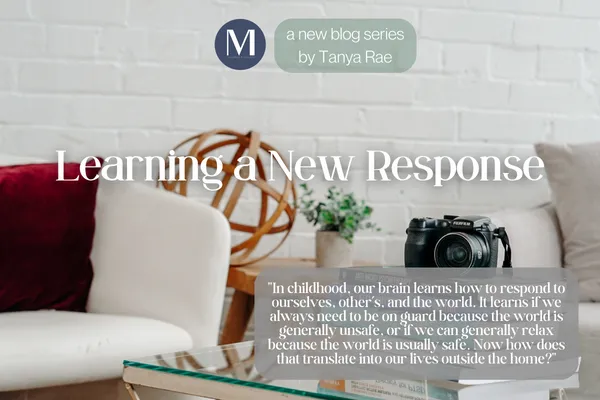the blog
A place for our team to share about topics they are passionate about, in hopes of allowing you to see and understand a bit more behind the faces on these pages.

Learning a New Response
If you've been following along with the series or not, we've discovered that we all have what’s known as an autonomic nervous system. Both our sympathetic and parasympathetic nervous systems are a part of this system. Our naturally occurring and extremely fast reacting fight, flight, freeze and fawn responses arise from these. Though potentially very uncomfortable, these are normal and protective responses of a part of the brain not responsible for thinking things through. This is important because the reactions need to be fast to keep us safe from harm or pain. It’s truly amazing and fantastic that our brain can do this for us!
However, it’s also distressing when we don’t have lots of practice moving into the calming “rest and digest” response of the parasympathetic nervous system.
In childhood, our brain learns how to respond to ourselves, other’s, and the world. It learns if we always need to be on guard because the world is generally unsafe, or if we can generally relax because the world is usually safe. If you left your childhood home with a toolbox full of tools and a manual of instructions in your brain for how to respond to, and guard yourself against an unsafe world where people are generally harmful and/or bad, you may find your nervous system is more easily activated. That’s okay because a toolbox can always use new tools and a manual can always be updated.
The “rest and digest” response is the tool we can use to calm down our fight or flight system. To do this, we want to practise things that cause our heart to slow, our muscles to relax, our breath to flow at a slower pace, and our brain to come back to the present moment. This practice gives us the power to send the message to our brain that we’re actually not in any danger at this moment. It also begins to show your brain the situations where you’re not actually in danger. All this helps to progressively start updating your manual.
Remember, if you’ve been using other responses like the fight, flight, freeze, or fawn one for a long time, they’re well practiced and have lots of cues in your instruction manual for when to use them. You want to practice and practice and practice this new response A LOT and across many different situations to build the habit.
Here’s one of many simple exercise we use to practice:
Rest one hand on your chest and the other on your belly
Inhale slowly but comfortably, imagining and feeling your belly fill up like a balloon. You should notice your chest doesn’t move much.
Exhale more slowly but comfortably, allowing all your muscles to relax from head to toe.
Repeat three times
Tip: Your exhale should be longer than your inhale. Some like to count, eg. in for a count of 7 and out for 11…whichever numbers work best for them, some don’t like to count at all and that’s fine too.
At the end of the day, we hope this blog series has been helpful to you. We hope you have learned something useful and beneficial for you in your daily life and we hope that you are feeling motivated and equipped to start practicing some new ways of responding to the different stressors that you experience throughout life.
Til next time,
Tanya Rae
Office Location: 1200 Brock Street South, Whitby, ON. L1N 4L9
© Marquis Counselling & Consulting | ALL RIGHTS RESERVED | TERMS & CONDITIONS | PRIVACY POLICY
